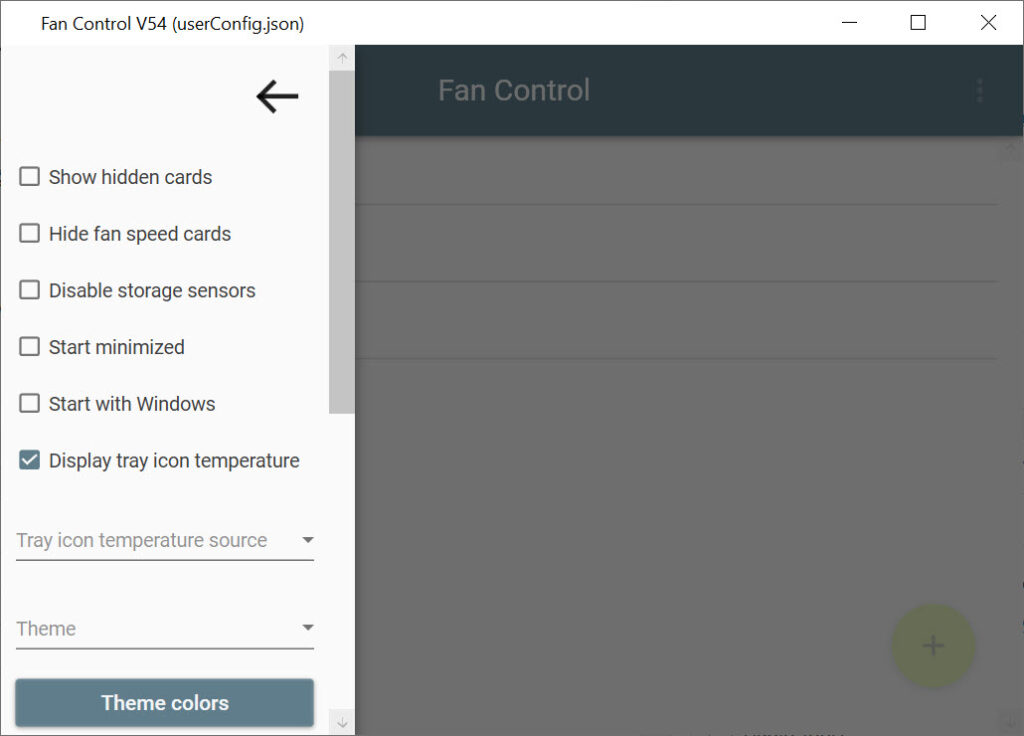

- #Arch fancontrol install
- #Arch fancontrol driver
- #Arch fancontrol full
- #Arch fancontrol pro
- #Arch fancontrol windows
To show all the columns, use i2cdetect as root: Once installed, load the i2c-dev kernel module.
#Arch fancontrol install
To find the temperature sensors of DIMMs, install the i2c-tools package. Answering YES also automatically starts the service. Note: A systemd service is automatically enabled if users answer YES when asked about generating /etc/conf.d/lm_sensors. Ln -s '/usr/lib/systemd/system/lm_rvice' '/etc/systemd/system//lm_rvice' * Chip `Intel digital thermal sensor' (confidence: 9)īusdriver `i2c_nforce2', I2C address 0x4cĬhip `Winbond W83L771AWG/ASG' (confidence: 6)ĭo you want to overwrite /etc/conf.d/lm_sensors? (YES/no): Now follows a summary of the probes I have just done.

Some south bridges, CPUs or memory controllers contain embedded sensors.ĭo you want to scan for them? This is totally safe. It is generally safeĪnd recommended to accept the default answers to all questions, To load to use lm_sensors most effectively. # sensors-detect This program will help you determine which kernel modules you need When the detection is finished, a summary of the probes is presented. This will create the /etc/conf.d/lm_sensors configuration file which is used by lm_rvice to automatically load kernel modules on boot. The "safe" answers are the defaults, so just hitting Enter to all the questions will generally not cause any problems. It will ask to probe for various hardware. See #Laptop screen issues after running sensors-detect. # Configuration file generated by pwmconfig, changes will be lostĭEVPATH=hwmon1=devices/pci0000:00/0000:00:11.0/0000:02:00.0/usb2/2-2/2-2.1/2-2.1:1.0/0003:1B1C:0C10.Warning: Do not use anything other than the default options (by just hitting Enter), unless you know exactly what you are doing. Hopefully it's a useful reference for you, fancontrol is quite helpful with errors if you screw up some values so tweak away! ~]# cat /etc/fancontrol The snippet below is my tweaked /etc/fancontrol file which took about 10 minutes of tweaking values to get everything just where I wanted. Native fan control via a USB controller on Linux. If you're happy with the outcome then enable the fancontrol service with: systemctl enable fancontrol -now If things aren't working quite right make changes to /etc/fancontrol and then repeat running fancontrol and so on.
#Arch fancontrol full
Once you have a working config (my full config is posted at the end of this article), you can test things out by running watch sensors in one terminal window and then fancontrol in another. You might decide it's easier to configure these values later and hit the "just save" button.

That process will look something like this:Īt the end of the pwmconfig wizard you'll be asked to set which temp probe correlates to which fan. Now it's time to run pwmconfig and follow the prompts on the screen to test the various PWM values and how they interact with the RPM values of your fans. Then run: sensors-detectįollow the prompts and you should see the fan speeds and temp probe readings like this: ~]# sensors Next, ensure that fancontrol and lm_sensors are installed (this varies per distro so no instructions here).
#Arch fancontrol pro
Configurationįirst you'll need to connect the Commander Pro to a USB header on your motherboard, hook up some fans and at least one temperature probe. I created a tiny Arch VM to run automatically on boot under ESXI and passed the USB device through to the guest for this purpose which uses 256mb of RAM. You will need a kernel of at least 5.9 or later. That changes today!Ĭonfiguration of this device is quite straightforward but is a little time consuming.
#Arch fancontrol windows
This sleek black box can be had for $40-75, I was fortunate enough to get mine for $40 because it seemed like a good idea before I realised it didn't support Linux and had to run a Windows VM for control. BIG thanks to the developer Marius Zachmann who made this happen.
#Arch fancontrol driver
This device used to be Windows only so it was a really lovely surprise to find that this driver shipped last year. Well my friends, I'm pleased to report that last summer the Corsair Commander Pro received native Linux kernel driver support in the 5.9 release. I can tune out a constant white noise pretty easily but the one thing that is unacceptable are fan notes that change wildly or oscillate. Relying on the built-in motherboard headers on server grade motherboards to reliably control fans with Linux has been a crapshoot since forever.


 0 kommentar(er)
0 kommentar(er)
